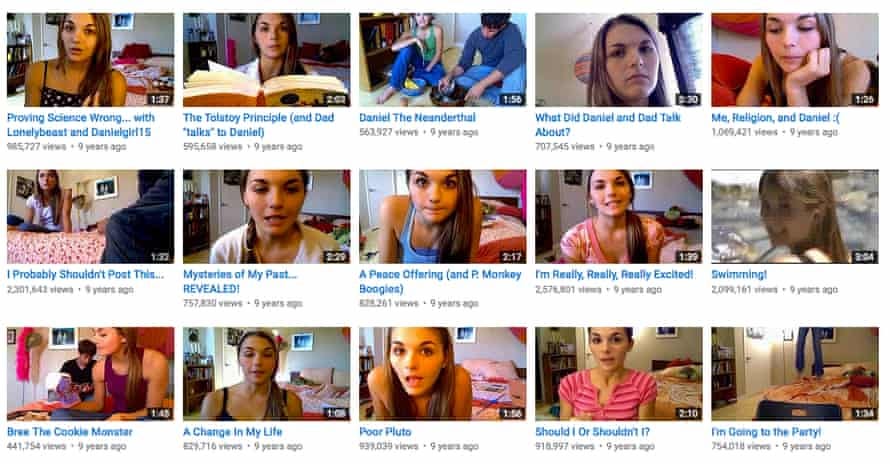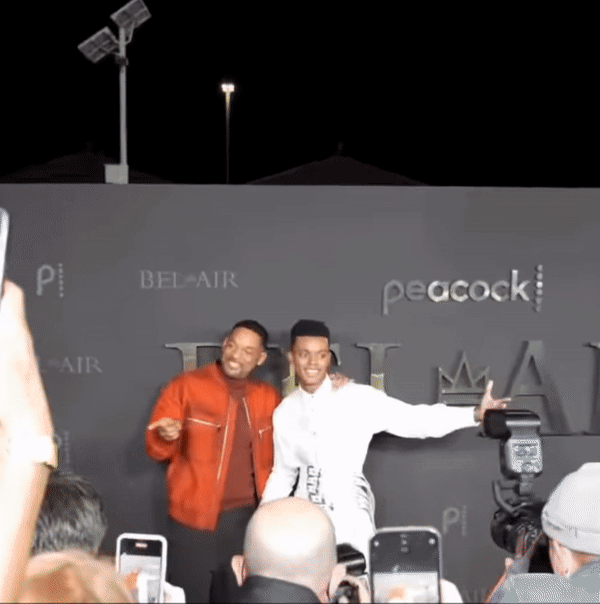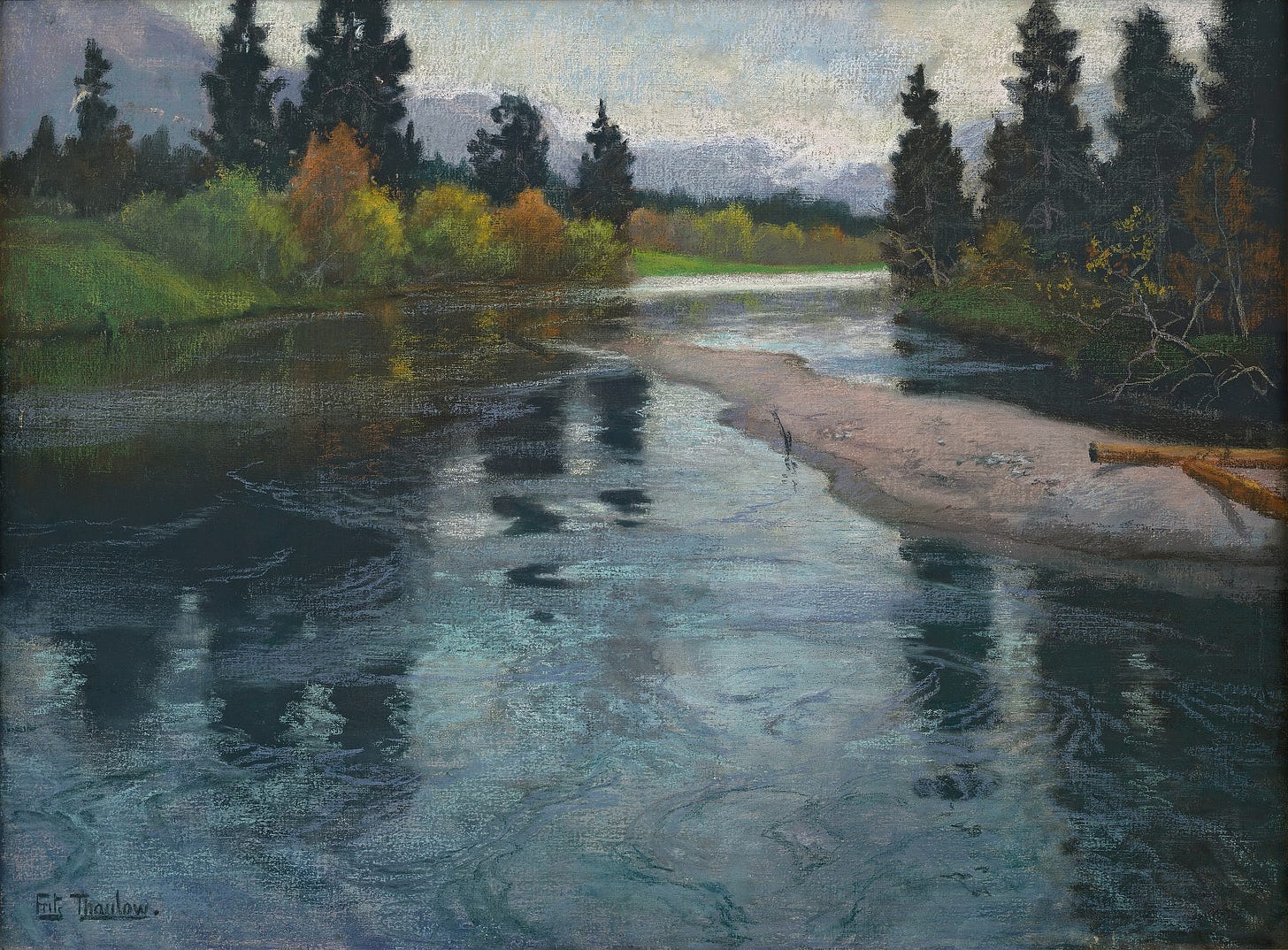DALL-E and the beginning of creation
017. On limitless worldbuilding on the synthetic internet (metaverse?)
Hey, friends—welcome back to online/offline, a weekly newsletter about technology, culture, and the future. This week, more thoughts on synthetic media following the release of DALL-E (previous essay). This newsletter is meant to be a conversation, so do reply with your thoughts/questions. And if you haven’t already, make sure to subscribe below.
The first internet influencer died mysteriously in a cult 13 years ago.
Or so they say.
She emerged mysteriously five years ago with an eerie video. Only to go dark again.
lonelygirl15 was a teenage girl named Bree Avery who started a YouTube video dairy in 2006. Her videos captured her everyday life, adventures, and responses to other YouTubers at the time. Soon after launch, lonelygirl15 started to interact with her viewers through her MySpace and email.
It only took three months for lonelygirl15 to be revealed as fake—a fictional character from the minds of a screenwriter, a former doctor, and a lawyer.
It didn’t matter, though. The mystery of lonelygirl15’s authenticity created a cult following online with message boards dedicated to the teenager’s content. The character and her friends continued to get millions of views. Those were ridiculously high YouTube numbers at the time. Unsurprisingly, lonelygirl15 partnered with Hershey’s and Neutrogena for product placement; the start of sponsored content.
lonelygirl15 means a lot more to the internet than most people realize. Today, we have fictional TikTok characters and, soon, our lives on the internet will be so algorithmically generated that the only way to feel something “real” will be by touching grass.
It’s only real if you believe it
In her first TikTok video, an influencer named Sydney, who apparently worked at a dating app, gave tips on how to spot red flags on a dating profile. The tips were decent and the video got picked up by some UK gossip rag and NY Post. The issue is ... these publications didn’t clarify that Sydney was a fictional character. In fact, Sydney didn’t use the video caption to clarify that she was a fictional character either for the 100,000 people who saw her video on their For You page. You had no clue that Sydney was a bit unless you clicked into her profile to read her bio.
Sydney and 20+ other TikTok characters are part of a cinematic universe developed by a startup called FourFront. The concept reminds me of lonelygirl15. Sure, there are influencers who post poreless skin and rented cars, but there’s something more insidious happening that we’ve yet to discuss. What if the characters aren’t actors taking on a role? There are characters emerging online, aided by technology and masterful storytelling, who are changing our perception of reality bit by bit. For example …
Daquan, a meme character and aggregator popularized by IMGN Media.
Lil Miquela, an iconic CGI character and model created by Brud.
And the many deepfakes I’ve seen online in the last two years. Brian Monarch is a prolific comedian who shares deepfakes of iconic pop culture moments on Instagram and TikTok. And, speaking of Will Smith—because I know someone is still talking about him—he posted a really fun one from the Bel Air tv show premiere last month. How fun is it?
The AI is getting smarter
I’ve been fascinated with deepfakes for a few years now, primarily because I think they’ll bend our reality in ways we’ve yet to imagine. I wrote about this in my first-ever essay for this newsletter and we’ve seen incredible technological progress since.
Last week, OpenAI, a research and deployment company, launched their new AI system called DALL·E 2.

DALL·E 2 can create original, realistic images and art from a text description. It can combine concepts, attributes, and styles.
DALL·E 2 can make realistic edits to existing images from a natural language caption. It can add and remove elements while taking shadows, reflections, and textures into account.
DALL·E 2 can take an image and create different variations of it inspired by the original.
This is incredibly important.
We’re being promised the metaverse by web2 bosses like Meta and web3 upstarts alike. But are we going to create a synthetic internet on our way to this promised land? Maybe ... let's see how DALL·E, and other systems like it, could potentially impact our online lives.
1. Creation. I spent a couple of hours at The Met this weekend staring at art from around the world. What I found remarkable was the many hours of training and dedication that went into creating a single piece of art. For example, an artist like Frits Thaulow who wanted to be an impressionist had to train for 4-5 years before creating any original work: two years dedicated to drawing and 2-3 years dedicated to painting and color. Space, lighting, dimension, anatomy—artists had to master it all. Nude models back then held poses for days, sometimes weeks, to allow artists to develop these skills. Just a decade ago, it was the ultimate display of skill to spend hours on Photoshop colorizing black and white images, adding skin tone, makeup, shadows ... I have a few such images in my vault. For centuries, artists have poured hours into their paper and digital sketchpads. Today, that seems absurd. Today, you input the right prompt in DALL·E and skip years of artistic training. It’s bittersweet.
2. Storytelling. You can find AI-generated text, images, video, and audio in the wild. Most recently, Andy Warhol narrated his own posthumous Netflix documentary, The Andy Warhol Diaries. Well, technically it was voiced by an actor and then morphed into Warhol’s voice using Resemble AI technology. When it comes to DALL·E, Untitled Frontier wrote a great essay with visuals about worldbuilding using the technology here. Entertainment, books, and gaming will never be the same.
3. Identity. With DALL·E, you can design and redesign your entire home. You can create avatars. You can conceptualize an entire experience from thin air. Once we combine the powers of DALL·E, GPT-3, Resemble AI, and other technologies yet to be invented, the ~metaverse~ will become more than an idea. Andrew Niccol, one of my favorite screenwriters, received mixed reviews for his 2002 film Simone, a story about a director who creates a virtual actress to star in his movies. Watching the film today, however, feels prescient. Who are the characters we can create online? What are the ideas that we propel? How do they embed into our physical lives? Because they definitely will—houses may start looking like a blend of Victorian and modern styles and we’ll know where the idea came from. Critically, what are the ethics of such technology? One of the characters in the movie gave a decent answer—“we’re fine with fake as long as you don’t lie about it.”
OpenAI has considered the potential problems that DALL·E could amplify: existing biases, harmful content, and misinformation. The proliferation of AI-generated images necessitates better moderation tools, detection tools, and authentication. Most importantly, AI ethics should be at the forefront of how OpenAI and others continue to research and build.
My Twitter exploration of DALL·E this weekend, since I’m still on the waitlist1, brought me down an anthropological rabbithole of the internet. None of this is really new; it’s simply an advanced version of experiences we’ve shared in the last two decades.
For me, DALL·E emphasizes the importance of creating and building in the real world. The words you input in DALL·E today can vary your output completely and vice versa. For example, do you want to see “male nurse” or “nurse”? Because words can be gendered and DALL·E captures the world as it is, not as we envision it could be.
For a microsecond, I worried this new technology would render art an ambient noise instead of something that we actively participate in. Then I realized that a remix is rarely better than the original unless the original already sucks. In the next decade, artists will become more important than ever in shaping culture, politics, and more. Their work may be used as inputs for DALL·E and other technologies, which will only maximize their artistic impact. A century from now, we may visit museums in the so-called ~metaverse~, but I’m optimistic that original works will be just as prominently featured to define the moment we find ourselves now and for years to come.
Thank you for reading. If you’re new to online/offline, make sure to subscribe to join the conversation.
Further Reading
+ Synthetic Media Landscape by Samsung NEXT
+ Lonelygirl15: how one mysterious vlogger changed the internet
+ This Company is Revolutionizing TV Through TikTok
+ Meet the Mystery Meme-Makers Behind the Popular Instagram ‘Daquan’
+ DALL·E 2 Preview - Risks and Limitations
:(







